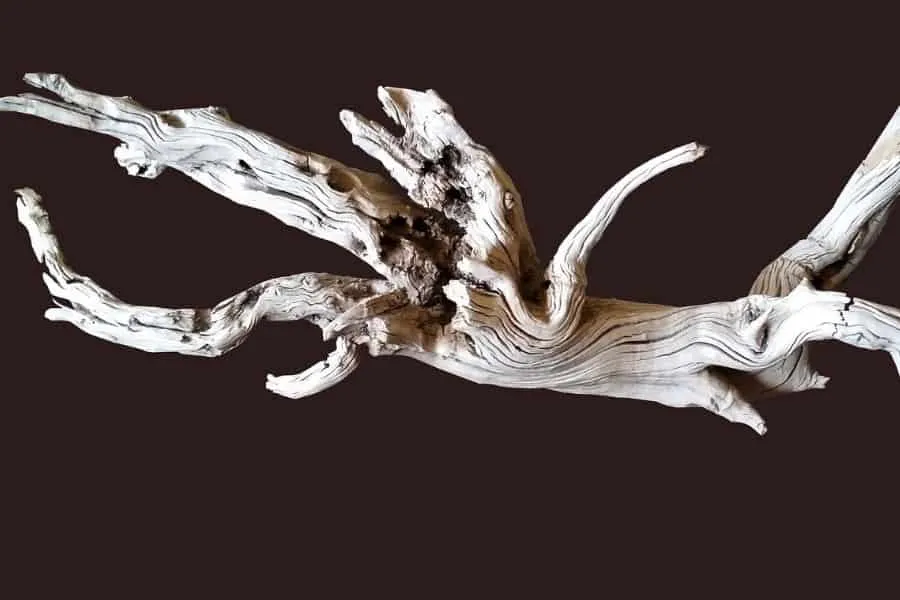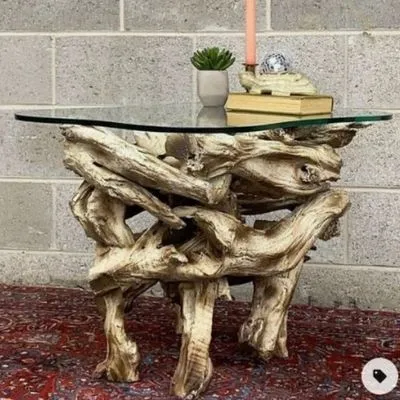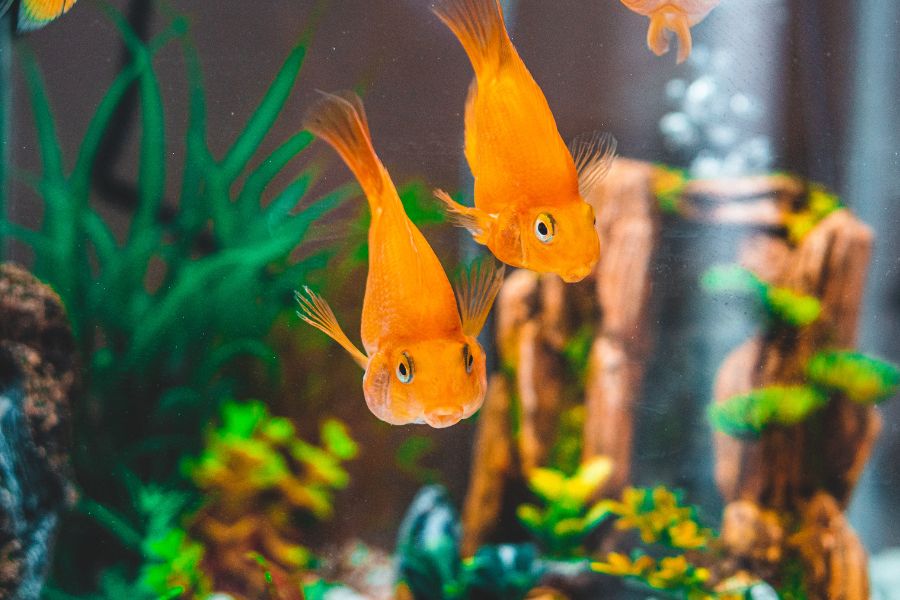Suppose you went on a driftwood hunt and found a beautiful piece you want to use for your art projects or decoration. However, you also worry about the driftwood rotting in the future, so you think of preserving it. However, how do you do that? How to preserve driftwood?
You can preserve driftwood in three steps. First is to clean and prep the driftwood by removing any weakened parts. Then you disinfect and dry the wood by boiling it, then soak it in bleach to kill microorganisms. After the wood is dry, you may seal and finish your driftwood with tung oil or epoxy resin to strengthen weak parts.

This article will explore how you can preserve your driftwood step-by-step. We also discuss if preserved and treated driftwood is good for your aquarium.
Why Do People Preserve Driftwood?
Driftwood may need preservation to prevent it from continuing to rot. Preserving driftwood may also improve its strength. Preserved driftwood may perform better when being used as part of furniture or supporting structure.
Generally, people preserve driftwood for several reasons. The first is to avoid further rotting and deterioration of the wood and also to improve the driftwood’s strength.
Some driftwood may have a nice shape and present a special aesthetic value. For example, some driftwood may look like an animal or something of value to the owner. As such, some owners decide to preserve the driftwood to prevent further decaying. This is because further decaying may alter the look of the wood.

Another reason to preserve driftwood is to strengthen it. This may be important, especially if the driftwood is going to be used to become some sort of supporting structure, for example, as part of the furniture.
Preserving the driftwood may help it become stronger and prevent further rotting that may cause the furniture to fail. Common preservation methods to strengthen driftwood include using epoxy resin to fill holes and many more.
How To Preserve Driftwood
Preserving driftwood requires you to clean and prep your wood before disinfecting it. Then you finish and seal the wood. You can also use some epoxy resin to fill holes or strengthen wood parts.
Preserving driftwood includes preparing, treating, and then applying finishing to the driftwood. Depending on your purpose with the driftwood piece, you may not need to execute all three steps below.

Step 1: Cleaning And Prepping Your Driftwood
At this stage, you will primarily focus on clearing the external surface and removing the unwanted bits on your driftwood. To execute the steps here, prepare the following:
- Compressed air (can-type should be ok for smaller driftwood pieces)
- Hand brush (to remove dirt from wood)
- Sand paper
- Nitrile hand gloves
- Start by removing the dead barks of your driftwood, with your hands wearing gloves, touch and feel if the external part of the wood is loose.
- If yes, remove it by pulling or pushing the bits off your driftwood.
- You may also consider breaking away any unwanted branches at this point.
- You can also consider cutting the wood if you do not need the whole piece of driftwood.
- Using a brush, brush away any wood bits that remain on your driftwood.
- If there are rougher parts on your driftwood that you intend to smoothen, you may use sandpaper to do so.
- If you have broken some branches or have cut some parts of the driftwood, you may use sandpaper to smoothen the area.
- Brush the area again to remove any sawdust.
- Blow some compressed air to the driftwood to remove smaller bits of dust you cannot see or anything trapped in the driftwood’s smaller holes.
Step 2: Disinfecting, Bleaching, And Drying Your Wood
In step 2, you will spend time disinfecting and really killing off any possible microorganisms that may lurk inside the driftwood. This will be done by boiling and then soaking the wood in bleach.
Then you will dry the wood by exposing it to the sun. You may also oven-bake the wood if you want a faster drying time.
For this step, prepare the following:
- Pot, large enough to accommodate water and driftwood
- Bleach
- A heavy piece of rock or tile (as weights to keep the driftwood underwater)
- Nitrile glove.
- Start by placing the driftwood in your pot, and then add water.
- Place a weight on top of the driftwood. This keeps the driftwood from floating.
- Boil the water. Leave it inside for 1-2 hours.
- During the boiling process, check on the wood occasionally, as the bubbling water may dislodge the weight, causing the wood to float.
- You may notice the wood becoming lighter in color as it is being boiled. This is because boiling may release some of the tannins in the driftwood.
- Remove the driftwood, and discard the water. Allow both to cool.
- Place the driftwood back into the pot, and place the weight on top of the wood.
- Refill the pot with 9 part water and 1 part bleach. Ensure the solution covers the entire driftwood.
- Leave soaking for at least 6 hours to disinfect the driftwood.
- Leaving the wood longer may whiten the wood piece, so if that is what you are looking for, do so for 2-3 days. The maximum whiteness may be achieved after 3-4 days of soaking.
- Remove the driftwood from the pot, and discard the bleach solution.
- Let the driftwood air dry for 24 hours before rinsing it off. This allows the bleach water to soak further into the wood.
- Rinse with water to remove any bleach residue.
- You will not dry the wood. You may opt for sun drying or oven drying.
- For sun drying, leave under the sun for 15-30 days to dry. If you do oven drying, place driftwood into the oven at 200°F (93°C) for 2-4 hours.
Step 3: Sealing And Finishing Your Driftwood
The third step may be optional, depending on your intention with the wood. Suppose you plan to place the driftwood into the aquarium. In that case, you may not want to seal and finish the driftwood, as the different finishings may introduce unwanted chemicals into your aquarium. These things may harm your fish.
However, if your goal is to strengthen or improve the look of your driftwood, then you will want to seal and finish your driftwood.
To seal and finish driftwood, prepare the following:
- Nitrile gloves
- Brush
- Tung oil (for finishing. You can always use any finishings you prefer)
- Epoxy resin
- Put on your nitrile gloves.
- Depending on your finishing goals, you may use different finishes.
- If you intend to simply apply some finishing to help preserve and make the wood look better, you may brush some tung oil to the driftwood.
- If you intend to completely preserve and fill in any uneven surface, you may use epoxy resin.
- Mix your resin, and brush it onto your wood pieces, in multiple coats to preserve it.
- You may also take note of any deep holes in your driftwood and fill it with epoxy resin. This avoids potential weak spots. If you do not strengthen these areas, it may crack or break in the future, especially if weight is added to the driftwood.
Is Preserved Driftwood Safe For Aquariums?
Preserved driftwood is generally unsafe for aquariums, as they tend to have additional finishings applied to them. Common finishings include epoxy, tung oil, linseed oil, or paint. These finishings may leech into the aquarium water and poison or endanger your fish.
Generally, suppose you intend to place your driftwood piece into your aquarium. In that case, you may want to stop after boiling and bleaching them. This is because if you finish your driftwood, you will be applying finishings to it. For example, tung oil, linseed oil, paint, or wax.
If you apply these finishings and then place the wood into your aquarium, these furnishings may leach into your aquarium water and potentially poison your fish.

In fact, some serious fish keepers skip the bleaching process, relying solely on boiling to disinfect their driftwood. This makes sense if you have fish worth thousands of dollars swimming around and spending days preparing and fine-tuning your aquarium.
On top of the safety reasons, leaving your treated driftwood raw also has its own beauty, as the wood will look natural. This may look better inside an aquarium.

